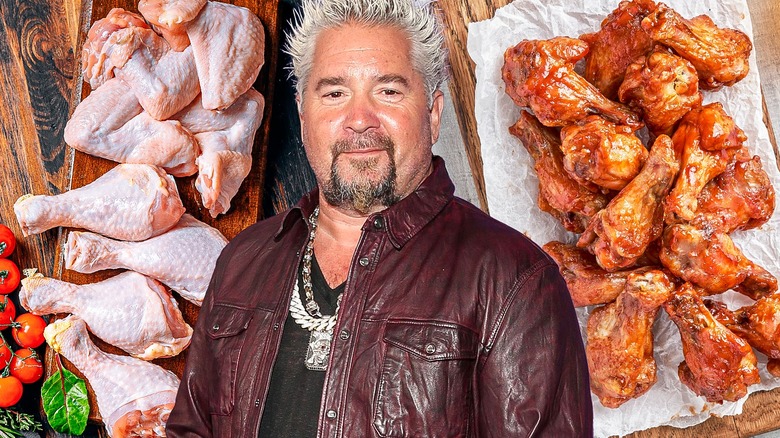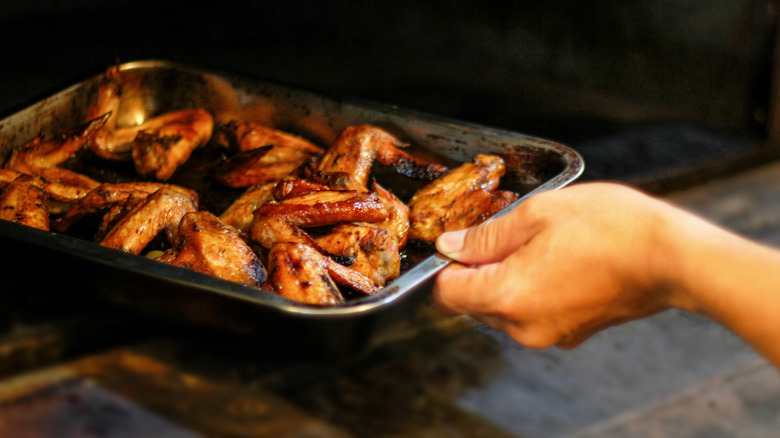This Is How Guy Fieri Recommends Cooking Wings At Home - Exclusive
To many cooks, chicken wings are a humble food. But ask celebrity food personality Guy Fieri about them, and you'll get a different perspective. The "Diners, Drive-Ins and Dives" host has been around the proverbial chicken wing block, and he prefers to look at a plain wing as a potential canvas for all of the great flavors a cook can divine.
Recently, Tasting Table caught up with Fieri for an exclusive interview, where — among other things — we plied the chef about his recommended way to cook wings at home. According to the Mayor of Flavortown, one of the biggest mistakes people make with wings is not cooking them enough. Another one is choosing the wrong appliance: Rather than dunking them in a deep fry or using the ever-popular air fryer to make your wings at home, Fieri tells us that you should bake them.
"So, here's what you do," he says. "You take your chicken wing and season it liberally ... put it on parchment paper or on a sheet tray ... If it's going to be your only cook, then bake it at 375 [degrees Fahrenheit]." Fieri says to keep an eye out for "a nice little crust," and only after the wing has cooked through should you add sauces. One other thing he says to keep an eye on? Make sure the fat underneath the skin is rendered.
Rendering chicken fat
There are many ways to get the crust that Guy Fieri mentions, but nearly every method involves removing moisture from the wing. You could pat dry your wings with a paper towel before cooking or leave them uncovered in the refrigerator overnight. Other shortcuts involve tossing your wings in cornstarch or baking soda before cooking. One source of moisture that's hard to withdraw is the under-skin fat. In truth, this is the source of added moisture you don't want to remove. This fat is beneficial for cooking chicken wings at home, but only if you follow Fieri's advice and let the oven cook.
Fieri points to chicken wing flats as an example. The cardinal sin of flats is having gummy skin that lacks crispness, and it's a clear sign your wing hasn't spent enough time under the heat. Animal fats begin to render around an internal temperature of 130-140 degrees Fahrenheit, and once they do, that liquified fat can cook the meat and make skin friable.
However, because the recommended internal temperature for wings is 165 degrees Fahrenheit, many cooks don't give the rendered fat enough time to actually become a part of the cooking process, removing their wings practically as soon as the fat becomes useful. Instead, consider allowing your wings to cook slightly past the suggested internal temperatures. Rather than ending up with dry meat, Fieri says the fat will moisturize the meat as it cooks while giving the skin the edge you're looking for.

